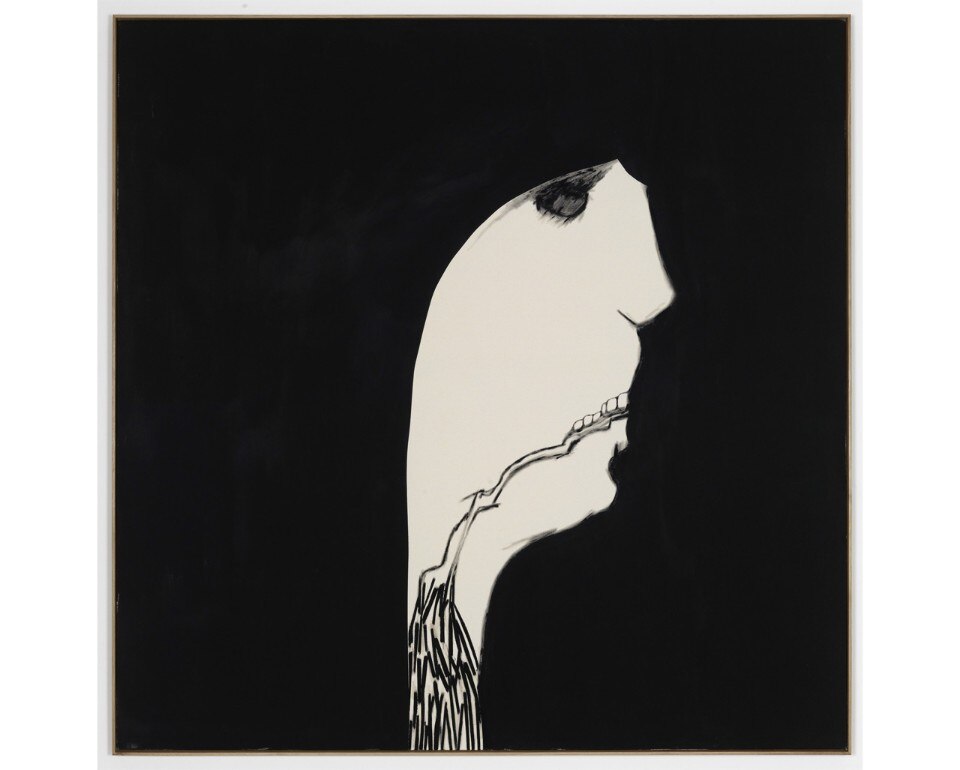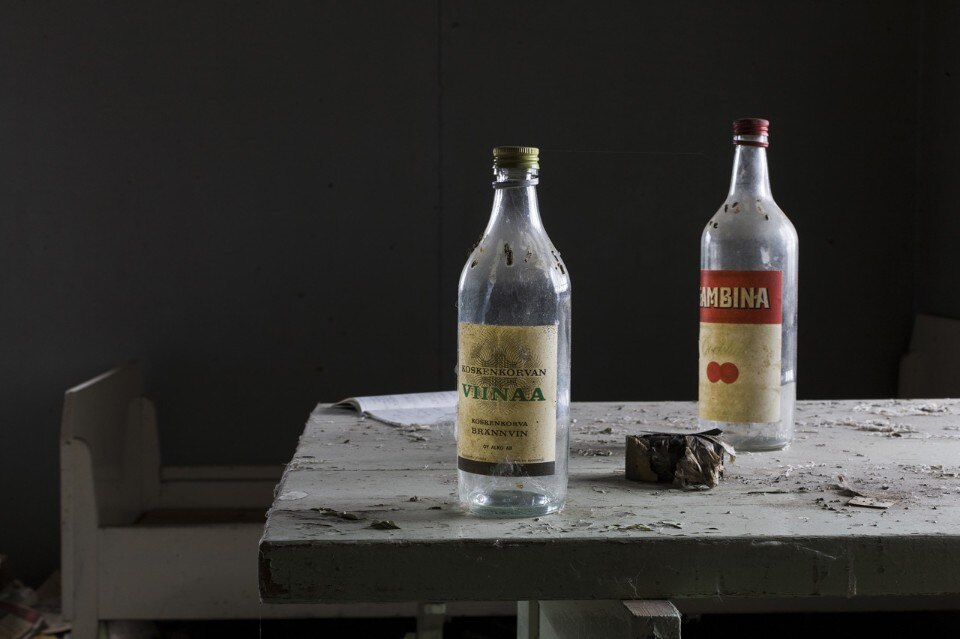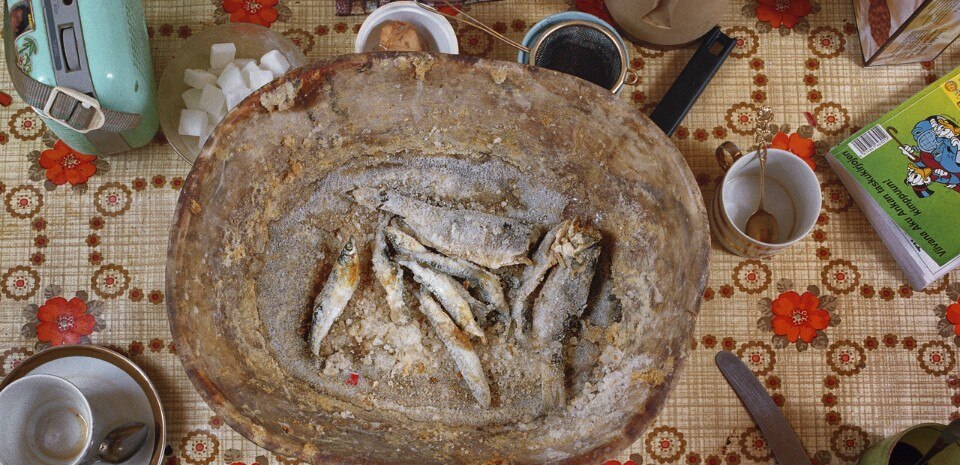
A large painting set apart from the wall but grazing the ceiling is held up by two vertical metal components: it acts as a backdrop for the “unfinished” figures of the certainly more sculptural elements of the exhibition. One of these is hung from the ceiling on cables, floating in space as if to deny its specific weight. The palette is made up of muddy, mould-like colours, and the form seems intended to suggest the remains – or the preambles of a body. The head, arching back, extends into vague, tendon-like filaments evoking bundles of nerves, fibres, connective tissue. Another sculpture rises up from the ground in high relief, enclosing a figure caught within a grid from which it is struggling to break free. The object has the ambiguity of a drawing, of graffiti etched into a structure intentionally made to resemble a piece of rubble or a ruin, hinting at a surface whose form may be linked to some past use.
Two sculptures are clad in Jesmonite, a material that the artist began experimenting with in 2014: harder than plaster, weighty and solid, it can be polished, painted, and “treated” with great flexibility, making it well-suited to the concept of transformation that underlies David’s works.
The mise-en-scène for the Collezione Maramotti exhibition has no explicit narrative, but the way in which the objects exist in relation to each other – and interact with space – yields a context that can be narrated to the viewer.

With “Time Flies. A highlight” Esko Männikkö presents fifty photographs, chosen to emphasize the similarities and consonance of his research with the Collection.
Time as presence/absence, crystallized in its images, is central to Männikkö’s poetics, as well as his masterly use of light and the extreme attention to composition, bestowing a sort of metaphysical suspension to his work. These substantial and formal elements have made several critics compare his work to Renaissance portraiture and the tonal, compositional and luministic qualities of Vermeer's paintings.
The frames, found in local markets or made with reused wood, specifically for the exhibition, are an essential visual part of the work and not an ancillary component, as they link his work to painting tradition. The favourite subjects of his photographs are objects, places, people and life styles, which are familiar to the artist, while at the same time reflecting humankind's universal traits. His approach is full of deep respect and sensitivity, never focusing on documentation, but rather on the search for empathy, a real contact exalting the beauty of everyday
ordinary aspects. Even the humblest and weakest subjects are never victims, but are depicted in their full dignity.

May 17 – October 18, 2015
Enrico “La Caduta” David
May 17 – September 27, 2015
Esko Männikkö
Time Flies. A highlight
Collezione Maramotti
via Fratelli Cervi 66, Reggio Emilia








